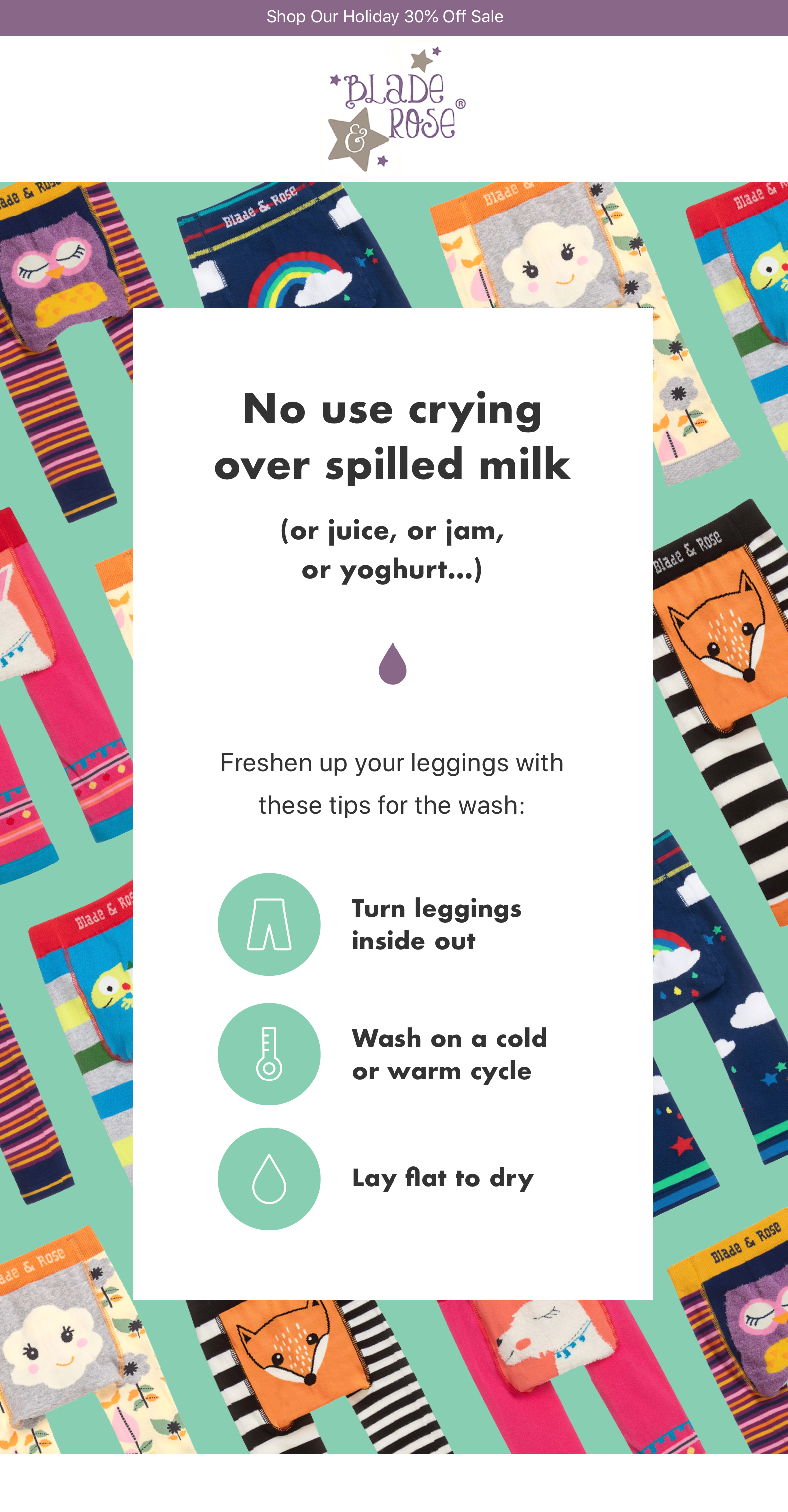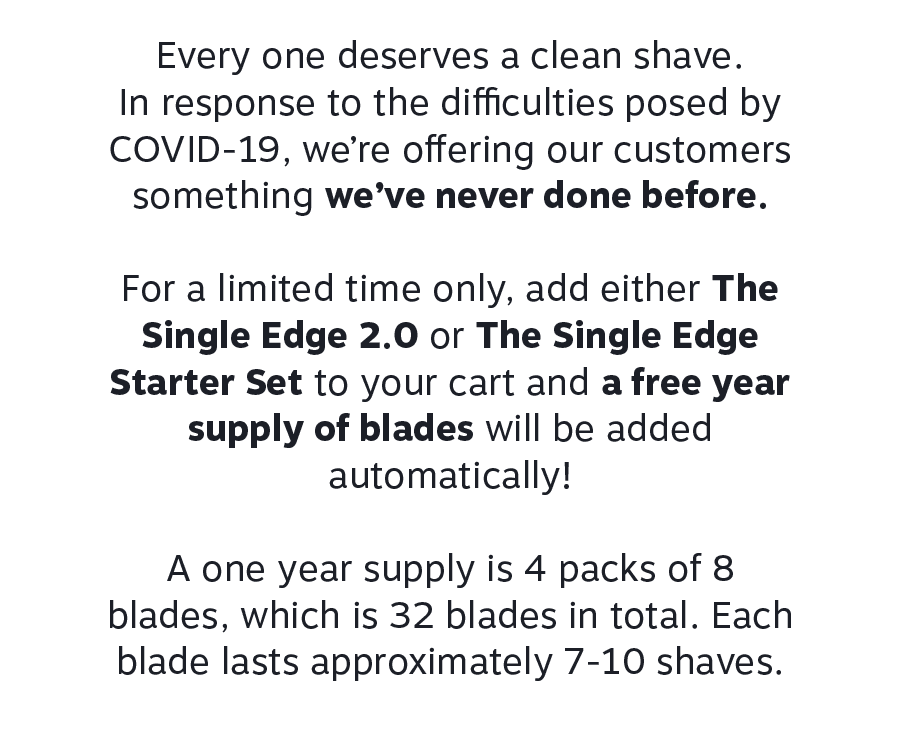There are a lot of uncertainties in the world of ecommerce right now, but one thing is true: many more people are shopping online.
However, this doesn’t guarantee anything for your business.
If you’re lucky enough to see increased traffic to your store, you won’t benefit unless you convert window shoppers.
And if you’re worried about a drop-off in visitors, you need to strengthen your relationship with existing customers.
No matter where you stand today, you need to take action.
In this article, we'll look at the reasons to focus your time on email marketing. Then we'll show you how 10 brands are using email to create amazing customer experiences to win over first-time shoppers and gain loyalty.
These are the two themes we'll explore to help you do the same:
So, why email?
Because inside or outside of a pandemic, it's a reliable way to convert shoppers and retain customers. We consistently see our clients achieve exponential returns from using email marketing for their businesses.
And it's not just us. Hubspot reports that 59% of marketers say email is their biggest source of ROI.
In other words, email marketing is a no-brainer under any circumstances.
And it's still thriving now.
We've found email marketing to be even more profitable than ever during this time.
In the past three weeks, our email clients have seen a sizable boost in conversion rates from both automated flows and campaigns (we’ll share specifics below).
And it's not just us. Paved reports, “Comparing the last 3 weeks of January (pre-COVID-19 measures in the west) with the last 3 weeks of March, global open rates have increased by 21%. People are opening their emails a lot more.”
If there was ever a time to use email communication to your benefit, it’s now.
Plus, it puts you in control.
Without dependence on ad pricing or platform decisions, email gives you the freedom to create the experiences your customers are demanding.
This is especially important right now because you need to be in control in order to differentiate yourself from the competition. Not just price-wise, but with customer experience and authenticity.
Email gives you the power to connect with your customers directly and build a strong, trusting relationship that will keep them coming back.
So you have an opportunity right now. Let’s show you how to make the most of it by leveraging email.
Create an ecommerce experience that is better than brick and mortar
Because physical retail locations are almost completely shut down, many shoppers who may have been hesitant to shop online are now doing so out of necessity.
This means there are more opportunities for acquisition and – if you provide a good customer experience – retention.
Email is the perfect tool for creating a personalized experience that lives up to what customers might expect when shopping in person.
Via email, you can:
- Help customers find what they’re looking for
- Personalize your communication
- Provide top-notch customer service
Here are some tips to help you do this right.
Help subscribers find what they’re looking for
As soon as you get a new email address, your goal is to turn that subscriber into a customer. To do that, you need to give them the information they need to make their first purchase.
Using email, you can hold their hand and walk them through the buying process.
Let’s look at an email from Everyman that does this exceptionally well.
This message is designed to highlight their best-selling product: The Grafton Pen. When the recipient opens the email, the first thing they see is a lifestyle image of the product and a short description of what it is:

Next, the email helpfully details the differences between all three versions of the product:

And finally, it displays positive reviews from customers and a clear call to action:

This email works because it doesn’t just market the pen, it provides:
- pertinent product information
- social proof
- and an easy next step
Automated communication like this is ideal for new subscribers because you can highlight products they’re most likely interested in and help them understand your brand. Think of it as the online equivalent of a sales associate guiding a customer shopping in a store.
Personalize your communication
One of the greatest advantages of email is the ability to tailor your communication to the individual customer.
This is key, especially considering a study by Experian which found that personalized emails generate six times higher transaction rates.
An easy way to do this is through list segmentation. You can build a unique experience based on a visitor's past activity. For example, sharing content applicable to the products they just ordered.
Blade & Rose sends care instructions to customers who purchase a pair of baby leggings:

To provide shoppers with both helpful and relevant email communication like this, try answering a question they’ll likely have once they receive their product.
Or, for a quick touch that makes any message feel more customized, add a dynamic product feed. This will show customers recommendations for items they’re most likely to be interested in.
Here’s a product feed used in a Blade & Rose upsell email:

This encourages customers to continue shopping and gives them an easy way to return to the store.
Even something as small as using the customer’s name can make a big difference. According to Campaign Monitor, emails with personalized subject lines are 26% more likely to be opened.
Provide top-notch customer service
One benefit of shopping brick and mortar is having the help of real, live store associates.
Luckily, you can still provide fantastic virtual support for your customers right in their inbox.
Of course, you should make it easy for customers to reach you by email, phone, or live chat, but it’s also important for your email communication to have a personal touch. Human interaction not only aids your customers, but it makes your brand more personal and less corporate.
Take a look at this automated message from a Victare customer service agent, sent to users who abandon their cart:

Thanks to the plain text format and headshot of a real person, this email feels like one-on-one communication and makes a great impression on customers. In fact, this email has a 15% click-through rate – compare that to Klaviyo’s industry-wide average for abandoned cart emails: 4.6%.
Best of all, with just a few sentences of copy and little design required, it’s easy and quick to implement, so you can make an immediate impact.
Be sure to pay special attention to repeat shoppers. After all, Adobe reports that a 5% increase in customer retention can boost overall profits by 25%.
Cocokind caters to customers after they place their first order by sending this email two months later:

By helping busy customers refill their favorite products and turning them into valuable repeat shoppers, this message carefully balances customer service with marketing.
Following up with timely reminders or helpful information post-purchase is an effective way to support your customers who have already shopped with you.
Communicate authentically
Right now, you have a rare opportunity to show your customers that your brand is honest and genuine.
Shoppers value authentic brands. A survey by Social Media Today showed that 86% of people say authenticity is important when deciding what brands they like and support.
This is particularly true right now. People want to know that you’re here to help them and offer your support – not just get their money. You can use email to:
- Make a real connection
- Quickly adapt your sales strategy
- Be there for your customers
- Share how you're supporting others
Make a real connection
We know you’ve heard this a thousand times over the last few weeks, but these really are unprecedented times. Therefore, it can be difficult to know exactly how to act.
You can either be the brand who sweeps a global pandemic under the rug and continues with business as usual, OR you can address the situation head-on to form a more authentic relationship with your customer.
One of our clients chose the latter with this email from their founders:

This letter is present and transparent, addressing the situation practically and detailing the precautions they’re taking under the current circumstances.
Written with an appropriate tone and genuine concern for the audience’s wellbeing, this message reads real and human. It also offers assistance, letting their audience know this brand is still here for them.
The goal here was simply to connect with customers during this difficult time, but the authenticity of this email helped it convert especially well – earning nearly 2x as much revenue as their average campaign.
If you haven’t already, send a personal message like this to your list. And going forward, continue to strengthen your relationship with your customers by communicating honestly and sensitively.
Quickly adapt your sales strategy
With daily life coming to a halt, many users are shopping online for a sense of normalcy and a distraction from the news. Remember those 21% increased open rates?
You have their time and attention. Now, all you need to do is give them a reason to buy from you.
Email allows you to put a spin on your marketing strategy with just a single campaign.
Suddenly, ebooks aren’t just informative, they’re a cure for boredom. And beauty products don’t just improve your appearance, they’re a self-care staple.
Everlane recently sent this email to their list for some much-needed comfort:

With many people working from home, leggings have become an everyday wardrobe essential. This bundle deal enables customers to pick up a couple of pairs and save.
How can your product improve your customer's life during a pandemic? Help them understand why it's especially valuable now.
This is also your opportunity to try something new.
Take Supply, for instance. They gave customers the chance to stock up on an essential by offering a whole year's worth of blades with the purchase of a straight edge razor.


This promotion helped Supply reach their best weekend since Cyber Monday.
You can do this too by giving your audience a rare deal – something you’ve never done before, and will likely never do again.
Be there for your customers
Yotpo reports that 35.7% of shoppers are paying more attention to marketing messages right now, meaning this is an ideal time to build relationships.
Want to be a small bright spot in your customer’s day? Shine in their inbox.
Much like you would with a friend, try sending along an email with a playlist, easy recipe ideas, pictures of your team’s pets, or a funny GIF. Whatever makes sense for your brand and your audience. The goal is to connect and strengthen your brand identity, but if it helps your customer better understand who you are, it’ll also lead to sales in the future.
To put a smile on the faces of Eczema Honey’s customers, we recently sent an email with a few sensitive-skin-themed memes:

You can also give your audience the tools they need to help you.
Many businesses are struggling right now, and people are looking for ways to support their favorite brands.
Girlfriend Collective made this easy for their customers by recently emailing their list with an offer for 20% off gift cards:

Not only do discounted gift cards allow you to earn extra income up front, but they give customers the opportunity to treat themselves or a loved one for less.
Sharing how you’re supporting others
A 2017 study by Cone Communications revealed that a whopping 87% of customers will purchase a product because a company advocated for an issue they cared about.
Particularly during times like these, businesses who do their part gain respect.
For some inspiration of how you can help those affected by the crisis, look to Allbirds, who’s donating new shoes to a healthcare professional for every pair purchased.

When you use email marketing to highlight your charitable efforts, it helps your customers make the connection that in supporting you, they are also supporting a cause they believe in.
These are very different times we’re living through, and it’s clear that we’ll need to adapt to come out stronger on the other side.
Email has shown its worth within this new context. But to benefit we'll need to go above and beyond to win over first-time shoppers and to gain the loyalty of existing customers.
